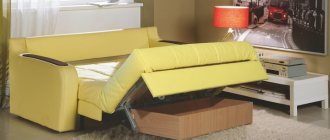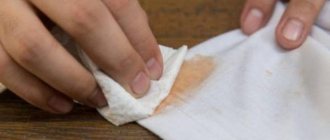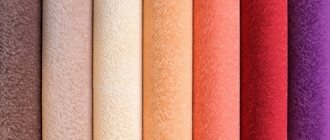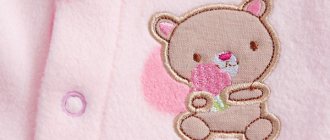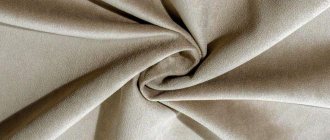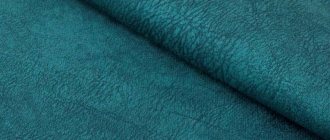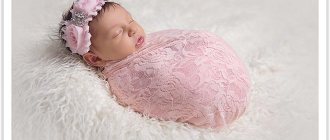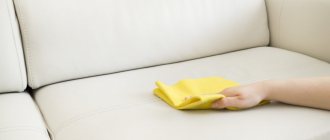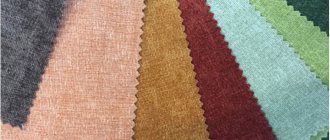Home Blog How to choose fabric for upholstery of chairs
Many of us prefer to sit and relax on soft chairs, both in living rooms and in the kitchen or dining room. But in order for the furniture to last longer, not lose its original shade, not wear out or fade, you need to choose the right material for the upholstery. This article will tell you about the types of coatings, their classification and features, as well as selection criteria. Our company has been producing furniture for HoReCa establishments for 27 years and we are ready to share our knowledge about what is suitable for home and public institutions.
Types of upholstery materials
Conventionally, fabric for chairs is divided into several categories. The first can be used as furniture finishing in the hallway, bedroom, living room or office. The second is relevant for the kitchen and dining area.
The principle of upholstery of chairs
Additional Information! You need to pay attention not only to visual nuances, but also to the quality and strength of the material.
Additionally, you need to take into account the design of the room, the functional purpose of the room, and the color scheme of the space. If you take into account all the nuances, you will be able to choose textiles quickly and efficiently.
Kitchen
In the kitchen, chairs are not distinguished by their functionality, so upholstery is much easier. But the surface of kitchen furniture is hard, constantly gets dirty and is constantly exposed to mechanical stress, so the following requirements are imposed on textiles:
- The base must be very strong.
- The product must withstand significant mechanical stress.
- The texture must be durable so as not to wrinkle or deform during use.
- Textiles should not absorb moisture, not burn and can be easily cleaned at the first need.
Chairs in the kitchen
Considering all the requirements for textiles for kitchen chairs, one conclusion suggests itself - dense synthetics would be the ideal option. Synthetic fibers will withstand constant humidity, dry cleaning, and constant mechanical stress.
Dining room, living room and office
The dining room, living room and study are rooms that are often visited by guests and family members. In accordance with this feature, the fabric for the chair or chair is selected:
- The fabric should not be peeled - pellets can significantly deteriorate the appearance of the furniture.
- It is undesirable to choose fabrics that wrinkle after slight mechanical impact.
- The appearance should fit into the overall design concept and be attractive.
- The fabric should be easy to clean and not deteriorate from exposure to household chemicals.
You might be interested in: Rules for choosing beautiful tulle for the bedroom
Living room chairs
Usually, covers are made from light fabric, since rooms of this type are made in soothing pastel colors. To prevent textiles from deteriorating during the washing process, they are treated with Teflon. It repels dirt and odors.
What to look for when choosing
Chair fabric must meet the following criteria:
- Durable structure. A pile surface or a densely woven fabric will last a long time.
- Easy cleansing. Furniture fabric that requires careful care is an additional difficulty for housewives.
- Long lasting color. High-quality material does not fade and does not irritate the skin.
- Wear resistance. The cladding is used intensively, so the material must be resistant to tearing and abrasion.
Fact! Durable furniture coverings are made from synthetics or polyester. Additional stability is provided by the internal mesh in the form of small transparent cells.
Manufacturers like to use special impregnations that provide moisture resistance or fire resistance.
Most popular upholstery fabrics
Fabric for upholstery of chairs, which one is better is difficult to determine right away. There are a lot of options, each of which is distinguished by the originality of the external plan and the properties of wear resistance and moisture resistance.
Chenille
Chenille means "caterpillar" in French. The fabric received this name because of its unusual appearance - the fibers are tightly twisted, with additional fibers woven into them. The canvas turns out textured and looks very rich.
You can cover chairs with fabric of this quality in the kitchen and living room, since the composition contains synthetic and natural fibers in varying proportions. Additional advantages of the fabric are:
- Long-lasting color that does not wash out or fade in the sun.
- The texture is soft, elastic, pliable and easy to work with.
- Thanks to its composition and density, it retains its attractive appearance for a long time.
Chenille for upholstery
There is also a drawback - chenille strongly absorbs moisture and liquid, and takes a long time to dry.
Jacquard
Jacquard is a relatively inexpensive material that has many advantages:
- The fiber weave is dense.
- The fabric contains synthetic and natural fibers.
- Textiles do not deform, do not fade in the sun, and do not wear out over a long period of time.
Note! Jacquard is a premium fabric. Especially if the composition includes a lot of natural raw materials.
Jacquard for furniture
Jacquard is easy to clean from dirt, so it is considered a fairly hygienic textile. Unfortunately, it is difficult to choose truly high-quality material.
Thermo-Jacquard
A “beginner” market absorber of fabrics for arranging the surfaces of diverse furniture. Material Features:
- Does not absorb moisture.
- Easy to clean from dirt;
- Can be used for a long time.
A unique pattern that is applied in several layers, creating unique visual effects.
Scotchgard
Special impregnation for various types of textiles. Thanks to this protective layer, the fabric does not absorb moisture and greasy substances. This type of layer is relevant on fabrics that will cover furniture in the kitchen or in the kitchen.
Flock
Flock is an ideal option for a home with children. The fabric is easy to clean even from difficult types of dirt. At the same time, the pattern is made simply, since the fibers do not crumble on the cuts.
Flock to update
A short soft pile is glued to the sweaty fabric, which gives the appearance of the flock an aesthetic appeal. You cannot clean flock with products that contain solvent, bleach, or chlorine—the fluff will come off.
You might be interested in the materials from which tulle is made: what fabrics are used
Velours
Velor chairs have several properties:
- The soft texture of the material does not crush after use.
- Huge variety of prints and colors.
- An inexpensive option for an aristocratic type of upholstery for furniture.
The disadvantage is the rapid loss of lint, which then remains on the clothes. Do not use many cleaning products as the textiles may fade.
Microfiber
Microfiber is considered a new generation textile. This type of furniture finishing is used due to its resistance to mechanical stress of varying degrees. In this case, weaving is carried out by combining ultra-thin threads of synthetic origin. Ideally combined with natural expensive materials.
Microfiber for furniture finishing
Alcantara
Chair upholstery made of Alcantara is becoming more and more common, since the material is an artificial analogue of suede. At the same time, the material is more effective:
- Keeps warm in winter, does not heat up in summer.
- Maintains an attractive appearance for a long time.
- Affordable price.
- Various colors.
If you go online, you can find a lot of designer furniture that is upholstered with Alcantara.
Arpatek
Arpatek is the highest quality leather substitute, which displaces many other textile analogues. There are many varieties of arpatek: python, varnish, crocodile and so on. You can choose the right option for any interior. Additional features:
- hypoallergenic;
- strength;
- low cost;
- does not get dirty.
Arpatek for furniture
If you upholster a chair with Arpatek, it will immediately make the furniture more elegant. An ideal option for a high-tech interior.
Tapestry
Tapestry is an ideal upholstery material that is produced on the same principle as jacquard. But the weaving fiber contains a larger number of threads. The textiles are the most natural in composition, although acrylic threads are woven into the fabric to increase density. Sometimes you can find round weaving.
Gozhka
Matting is a good analogue of chenille. Covering with matting is most often done, since the material has a lot of positive properties:
- The weave is coarse and large compared to chenille.
- Usually 2 types of fibers of similar shade are intertwined in a checkerboard pattern.
- Does not absorb odor and does not fade in the sun.
- You can clean the surface with a vacuum cleaner or soapy water - dirt does not eat into the threads.
Chair matting
Recreates the effect of a natural surface, therefore it is often used to decorate furniture that will be part of an eco-style interior. It is not advisable to upholster chairs in a house where there are cats - pets love to sharpen their claws on such textured fabric.
You might be interested in what satin is: description of fabric for curtains
Velveteen
The corduroy finish looks aristocratic and expensive. The fabric is soft to the touch with a variety of rib types. The color scheme is different, and various prints are often found. It retains its original appearance for a long time, but reupholstering such material involves a lot of inconvenience - small debris clings to the pile, it is difficult to clean from dirt, and dust quickly accumulates.
Artificial and natural leather
Leatherette and genuine leather are the most popular options for transforming furniture. There are many analogues of genuine leather that are of good quality and attractive appearance.
Leather for upholstery
Additional processing methods
To protect furniture fabrics from various influences, they are impregnated with compounds that are safe for people. Among them:
- Water-repellent impregnations. Reduces the amount of moisture absorbed by the upholstery.
- Anti-allergenic compounds. Prevents the proliferation of parasites and microbes on the surface. Moreover, they do not cause allergies and are completely safe for people.
- Dirt repellents. After their application, contamination, some types of oils and other substances are less absorbed into the finish. But they don't help with everything.
During production, impregnations are sprayed onto the finished surface and left for a short time. After drying, they do not emit any unpleasant odors.
DIY chair covers made of fabric
In order not to constantly return to changing the upholstery, it is worth making special covers for chairs. First you need to choose the right fabric for your chair covers. The material should fit into the interior, be easy to wash, and be of good quality.
Next, you should choose a sketch of the product. There are a lot of complex options, but there are also simple manufacturing instructions. Do-it-yourself chair covers made of fabric for beginners are made in accordance with the following algorithm:
- Take measurements from furniture. It is important to measure the length from the middle of the front legs to the middle of the back legs across the entire body. It is important to take into account all curves. Determine the width of the back and seat.
- Make a pattern. The result is one piece - a wide strip of fabric.
- Finish the edges of the cut.
- Place the workpiece on a chair. Sew the tape on both sides in the place where the bend is formed from the back to the seat. Tie a ribbon behind the back.
A simple cover for a chair
Such a cover can become the basis for a children's version of the product - just make an applique of the muzzle or sew on beads and buttons. You can make the cape soft by making a lining, which in turn is stuffed with synthetic padding or foam rubber.
Chair restoration.
Upholstery replacement is also carried out in stages.
- The foam rubber is changed - it must be attached to the frame with glue or use a furniture stapler. It is better to completely change the filler,
- New upholstery is cut out, for this purpose the details of the old one are laid out and outlined on the fabric.
- Before stretching the covers, a layer of padding polyester or batting is attached over the foam rubber (with a furniture stapler).
- Fastening the fabric begins from the middle of the frame ribs; it is fixed in 4 places. Next, it is fastened with staples, moving from the center to the edges, alternately in both directions.
- The material must be distributed evenly and ensure that there is no excessive tension, sagging or distortion.
How to cover a chair with dermantine
It is often necessary to change the upholstery on chairs. To do this, you must first disassemble the chair. Clean parts from old upholstery. If necessary, replace the soft filling. Next is how to cover a chair with dermantine:
- Attach the seat to the dermantine piece. Trace the shape with room for folding.
- Cut out the part. Pin the pattern to the bottom of the piece using a construction stapler.
- Repeat with the back too.
Upholstering the chair seat with dermantine
You can also restore the stool.
Over time, the appearance of upholstered furniture, in particular chairs, becomes unattractive. Often the problem concerns damage to the upholstery. You can replace the old coating without any problems and with special equipment. It is important to choose the right fabric for this. Protective covers can be created from this material by sewing.
Removing old drapery
The main condition for restoration is this: the frame of your chair must be strong and well preserved. Everything else is completely at the mercy of your imagination and diligence. If the wooden frame is significantly damaged or damaged by a wood borer beetle during use, it is almost impossible to restore such a chair.
You need to start with a careful examination of the chair to be restored. Before starting restoration work, it is necessary to remove the old upholstery. If some parts are damaged, there are cracks or chips, then these elements need to be repaired. Chips and cracks are glued together using PVA glue or wood glue, and tightened using clamps (a tool for fixing parts when gluing). You can use paper tape to seal small cracks. Excess holes and irregularities are filled with a mixture of small sawdust and glue.
Tools for reupholstering a chair: stapler, screwdrivers, pliers, drill, jigsaw, screwdriver.
Here is an approximate list of tools that may be useful if you decide to reupholster a chair with your own hands:
- Screwdriver Set;
- nail puller;
- pliers;
- bit;
- carpenter's wooden hammer (mallet);
- scissors.
To remove old seat upholstery, you must first use a nail puller to remove all the nails securing it. Every effort must be made to do this carefully. The facing fabric should remain intact, since it can later be used as a pattern for a new drapery.
Having safely removed the facing material, use scissors to cut the twine holding the burlap and the filler within the boundaries of the structure. To remove the springs, you need to cut the twine that secures them, and then pull out any excess nails.
Removing the facing fabric from the back of the chair is done in the same manner using the same tools. Moreover, first the upholstery fabric is removed, and then the burlap and filling, which form the basis of the drapery of the chair. After removing all the upholstery materials from the chair, its interior - the wooden frame - will become accessible. All wooden elements of the chair are carefully inspected and, if necessary, they are restored. Usually it consists of strengthening the sheathing, replacing some wooden elements and then painting them.
Features of the cut
There are several varieties of cut shapes for chair covers. Three are suitable for the kitchen:
- For permanent, daily use products, tight-fitting covers are best suited. They fit as tightly as possible to the back of the chair and to its seat, so tightly that removing the cape can be quite difficult. This cut protects the soft parts of the piece of furniture well and covers small parts of the frame, starting from the back and ending with the legs.
- A loose cut allows you to quickly transform furniture. As a rule, this type of tailoring is used to create ceremonial holiday capes, which is why expensive fabrics are used to make them.
- Drapery covers are designed to cover unsightly parts of the chair or add comfort during their use. So, for example, if the seat upholstery of a chair is damaged, it can be covered with a cape with lower drapery. If you add foam rubber to the upper part, sitting on the stool will become softer.
What to choose as a filler?
Most often this is sheet foam rubber. It comes in different thicknesses, the optimal thickness being 4-5 cm. You can use padding polyester as a lining between the fabric and foam rubber.
This method will simplify further stretching of the fabric and eliminate unnecessary folds.
- DIY cornice: a detailed description of how to design and decorate a stylish interior element (80 photos)
- DIY folding chair: 110 photos, drawings, diagrams and sketches of convenient and easy options for creating portable chairs
- Do-it-yourself pouf: step-by-step instructions on how to build a stylish and original interior element with your own hands (105 photos)
The design of a sofa on snake springs and options for its restoration
Snake springs in expensive models are used as an additional means to increase elasticity. In budget models, a foam block can be placed on this base. They are attached to a wooden or metal frame across the seat - each spring separately. The installation step depends on the planned load. If your sofa begins to sag, or the springs have lost their elasticity or are broken, the solution is to replace them.
To increase elasticity and extend service life, when reupholstering a sofa, the number of “snakes” can be increased. Another option is transverse reinforcement with rigid corsage ribbons (which are used for straps on bags and backpacks).
For durability and greater elasticity, use grosgrain ribbon
The tape is nailed on one side to the frame. Professional furniture makers then tighten it using a special tool, but it can be replaced with a regular block wrapped around the middle with coarse-grain sandpaper. You wrap a couple of turns of tape around this beam, pull with both hands (make sure that the frame does not bend), secure the tape with staples or nails, release and cut off the excess. The same method is also suitable for increasing the service life of a mattress with slats.
Where to begin
First, you need to get rid of the old upholstery and filling once and for all. Only the springs, if any, should remain.
Secondly, carefully inspect the product to be remade. Its frame must be strong and stable, otherwise all the work will be done in vain. It is recommended that along with changing the upholstery fabric, you also change the entire chair.
To do this, you need to sand the surface to eliminate all scratches and unevenness, rinse the product thoroughly, tighten up loose parts, replace fittings, apply a primer (putty or white paint), paint and seal the result with varnish.
Thirdly, all the necessary tools and materials are prepared, which include:
- Fabric for reupholstery;
- Seat filler;
- PVA glue;
- Centimeter or long ruler;
- Cardboard pattern or plywood base for seating;
- Furniture stapler or small nails;
- Screwdriver, screws;
- Scissors or stationery knife;
- Pencil, soap or crayons (for measuring fabric).
An important point is the choice of suitable upholstery for upholstering the chair, which should be as dense and strong as possible. Also, upholstery fabric should be easy to clean from various types of dirt using a sponge or brush.
So, you can choose from tapestry, wool, chenille, artificial and natural leather, jacquard, satin. The required size is calculated by the formula: area of the upholstered area + 15-20 cm around the entire perimeter on the bends.
As for the filler, it should have a density of 30-50 kg/m3 and a thickness of at least 4 cm. Foam rubber, a soft, durable, non-creasing and non-deformable material, is considered optimal. Sheet polyurethane foam and latex are also used.
Batting and padding polyester are used extremely rarely, as they do not hold their shape and quickly sag. Under no circumstances should you stuff the seat with bulk materials (polyurethane balls, buckwheat husks, etc.).
Tips and tricks
It is not difficult to reupholster a chair with new upholstery fabric yourself. The proposed algorithm will help even a novice master cope with the task.
Some recommendations will help in your work:
- Another way to tighten the fabric sequentially is to fasten the staples in the middle of each side, starting from opposite sides. Then the seat rotates, and the fabric is fixed further in a similar way, gradually shifting in one direction or the other.
- Springs are much more durable than upholstery fabric, so there is no need to remove the metal filling.
- The seat for a chair without springs can be leather straps stretched in strips or crosswise.
- Threaded fittings should not peek out from under the upholstery, but they should also not be covered with too thick a layer of fabric.
- The stapler must have enough power to penetrate the wood.
- If you buy more fabric than you need to cover an upholstered chair, you can make additional pillows or bolsters to match the item.
- Rapid wear of the fabric from the edges will be prevented by special tape glued to dangerous areas.
You can always put your favorite silk or soft velor of the most intense and enchanting colors on top of a dense material, and the frame of the chair can be decorated with fabric scraps or amazing paintings.
You cannot say goodbye to a chair with worn or torn upholstery right away, since a strong and stable frame can last for many years. New finishes can give furniture a second life, refreshing the familiar interior without breaking the bank.
To do this, just think about the design of the chair, choose the fabric for the upholstery, prepare the necessary tools and get to work in a creative mood.
Stages of reupholstery
After the tools and materials are prepared, you can proceed directly to the reupholstery.
Removing old upholstery and disassembling the frame
First, remove the old upholstery. An anti-stapler is useful for this:
- turn the chair upside down;
- use an anti-stapler to pick up the staple on the fabric;
- pull it towards you while pressing on the chair;
- one side of the staple will come out, then pull it out completely with pliers;
- repeat for all staples.
If there is no anti-stapler, the staples are picked up with scissors.
Next, they disassemble the frame by gently tapping it with a hammer. If it is fastened with screws or nails, they are removed. All parts are inspected for damage and fungus. Cracked or broken parts are replaced, the rest are cleaned and varnished as necessary.
Creating a soft substrate
The soft backing is cut out of padding polyester or foam rubber. First, make a pattern on cardboard in accordance with the dimensions of the seat. Then, according to the pattern, a part is cut out from the material for the backing.
Next, the cut foam rubber is glued to the seat using PVA glue. The synthetic winterizer is laid in one or several layers depending on the desired thickness of the substrate.
The optimal thickness for the back is 3–5 cm, for the seat — 7–10 cm. Each layer must be glued to the underlying one so that they do not move. It is recommended to add burlap or horsehair to the middle - this will prevent dust mites from getting into the upholstery.
Fastening the upholstery
The upholstery fabric is pulled tightly so that it does not slip and wrinkle. They also attach it step by step:
- secure with staples from the front edge of the seat;
- pull the fabric and secure it from the back edge;
- fasten sequentially on the left, right, stretching the fabric;
- trim off excess material.
Instead of staples, you can use thin short nails. After securing the upholstery, assemble the chair. The same technique is suitable for upholstering chairs.
Some chairs, instead of a solid seat, are made of a wooden frame with elastic bands attached to it. To restore the chair, you will need to find tape of the same width - they are sold in furniture stores.
The tape is fastened with staples to the base of the chair, spreading it evenly. First attach to one side, then stretch and attach to the opposite. After this, the tape is passed under the seat and secured again.
The tapes need to be tightened with reinforcement; the tensile force on the chair seat should be 12 kg. This is measured with a steelyard. Pulling the tape is quite difficult. You will have to buy a special device for tensioning the tapes at a hardware store.
The peculiarity of the “pie with ribbons” is that a piece of any dense fabric is placed between the ribbons and the foam rubber. It is needed to protect the foam from rapid abrasion.
See how the workflow happens:
It is not difficult to properly cover a chair with fabric even at home. The fabric for making a chair cover is sold at a fabric store. Most tools are available in any home; in addition, you will need a furniture stapler. But if it is not found, the staples are replaced with small nails.
What to choose as a filler?
Most often this is sheet foam rubber. It comes in different thicknesses, the optimal thickness being 4-5 cm. You can use padding polyester as a lining between the fabric and foam rubber.
This method will simplify further stretching of the fabric and eliminate unnecessary folds.
- DIY cornice: a detailed description of how to design and decorate a stylish interior element (80 photos)
- DIY folding chair: 110 photos, drawings, diagrams and sketches of convenient and easy options for creating portable chairs
- Do-it-yourself pouf: step-by-step instructions on how to build a stylish and original interior element with your own hands (105 photos)
